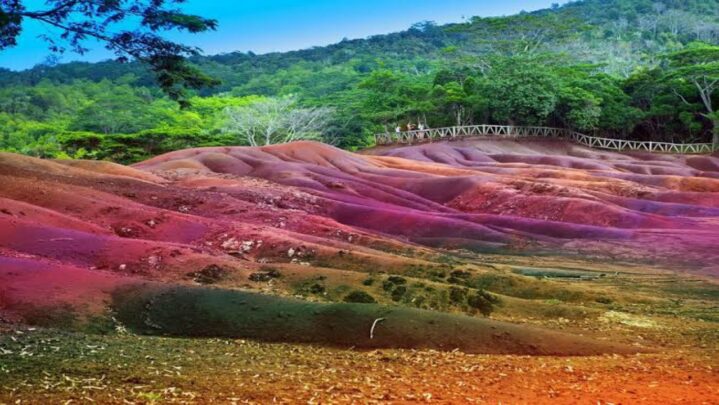China’s Rainbow Mountains, which are part of the Zhangye Danxia Landform Geological Park, are a geological marvel. These well-known Chinese mountains are remarkable for their unearthly colours, which resemble a rainbow painted on the peaks of undulating slopes.
The Rainbow Mountains are pre-Himalayan prehistoric sandstones and schists that were deposited in China. Iron and trace minerals were deposited in the sand and silt, providing the essential component for the formation of the hues we see today. The Indian Plate colliding with the Eurasian Plate roughly 55 million years ago disturbed what was originally a stratified horizontal and level strata. A similar process folded what were previously flat sandstones into the Rainbow Mountains we see today, much like when two vehicles collide and the bumpers fold and break.
This process raised mountains and uncovered sedimentary materials that were previously buried deep beneath the earth’s surface. Weathering and erosion exposed underlying formations with varied mineralogy and chemistry beneath the overlaying layers of continental siliciclastic rocks. This is what enables the Rainbow Mountains to have such a wide range of hues.
The primary hue is a deep red sandstone, similar to the Fountain Formation found in Colorado’s Flatirons, Red Rocks Park, and Garden of the Gods. The red tint comes from an iron oxide layer and hematite cementation between the sandstone grains. This is the same process that occurs when a piece of metal is left outside in the rain and creates a red rust film around the edges.
When elemental iron is exposed to water and oxygen, it oxidises to iron oxide, which has a dark red hue. The iron oxide staining of the sandstone Danxia formation is a defining feature of the Rainbow Mountains. Iron oxides usually produce a dark red pigment, however, there are times when they produce various colours. Fortunately, you won’t have to fly to northwest China to witness this process. Take a walk outside and take in the scenery, looking down and out. If you try to identify a rock with red colouration all around, you’ve probably found an iron oxide stained sandstone.
Keep reading successyeti.com
Also Read: Have You Ever Heard Of Tree Climbing Goats In Morocco?





